Water Supplies and Global Warming
Water supplies are already limiting many human societies. Shortages are likely to become increasingly frequent as global warming interacts with growing populations and increasingly developed societies that demand more water for agriculture, manufacturing, and personal use.
Water pollution is also a major problem. More than five million people die from waterborne diseases each year - 10 times the number killed in wars around the globe.
Global warming is likely to increase these problems by increasing the frequency of both floods and droughts and changing the seasonal pattern of runoff from snowpacks and glaciers. In addition, salt water incursion into low lying coastal areas and river deltas will restrict agriculture, reduce availability of fresh water, and endanger fresh water wildlife.
In short, one of the manifestations of global climate change is significant regional changes in the long term hydrological cycle. Some places will experience more precipiation, come less, and many will experience strong changes on the seasonal nature of precipitation. Indeed, this is the primary manifestation of climate change in the Pacific Northwest. This overall imbalance on a 100 year time scale is shown below as well as some examples of current water stress.
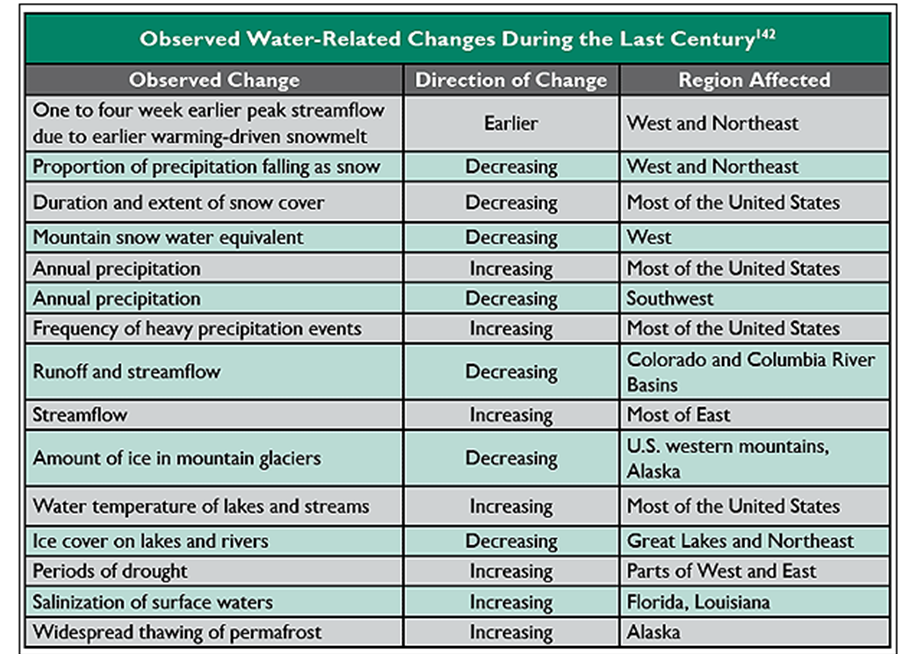
Note: On the issue of whether or not the US Annual precipitation increaed during the last century, the data, shown below, a) don't really support this and b) show that rainfall is highly variable with long term droughts and periods of excessive rain. The excessive rain happened in the 1990s, the last decade of the last century, but that trend does not continue.

Some examples of significant changes in the regional availability of water:
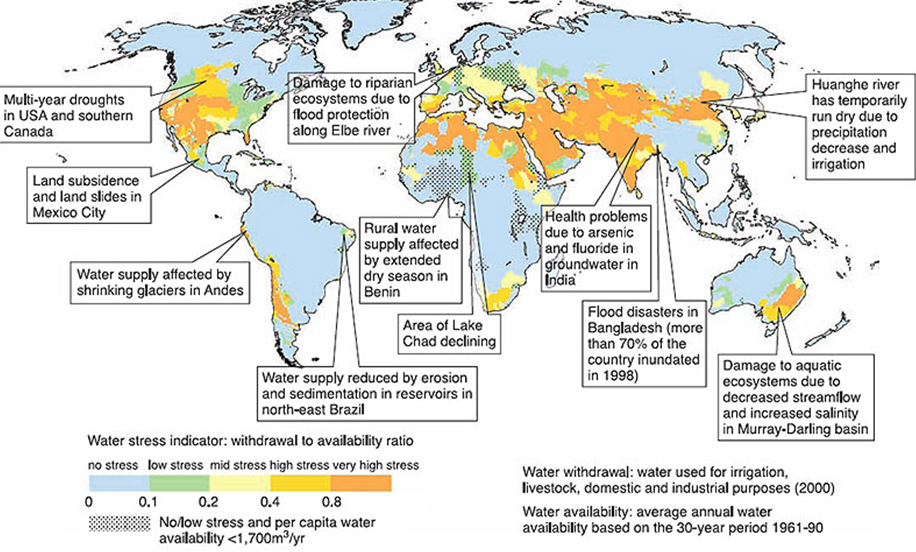
Most future climate models show that precipitation patterns will change as some places will get drier, and a few places will get
much wetter. One example is shown below

All of this is compounded by the soaring demand for water in the world. For example:
The world's population has tripled in the last 100 years, but water use has increased sixfold. Agriculture now consumes 70 % of the water used worldwide.
Much more will be needed if we are to feed the world's growing population - predicted to rise from 6.8 billion today to 8.9 billion by 2050.
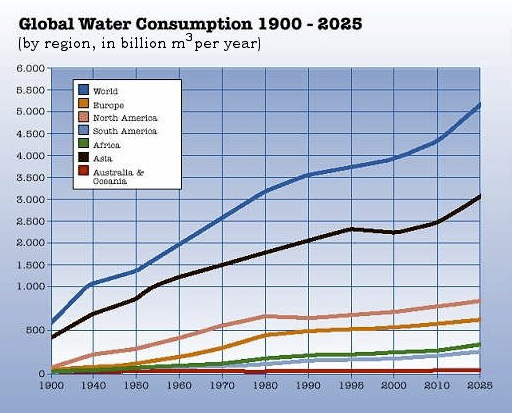
In addition, Water use is very uneven. Just like energy, Americans are by far the largest consumers.
Water consumption will soar further as more people expect Western-style lifestyles and diets - one kilogram of grain-fed beef needs at least 15 cubic meters of water, while a kilo of cereals needs less than three cubic meters Note the tremendous inequity in the figure below.
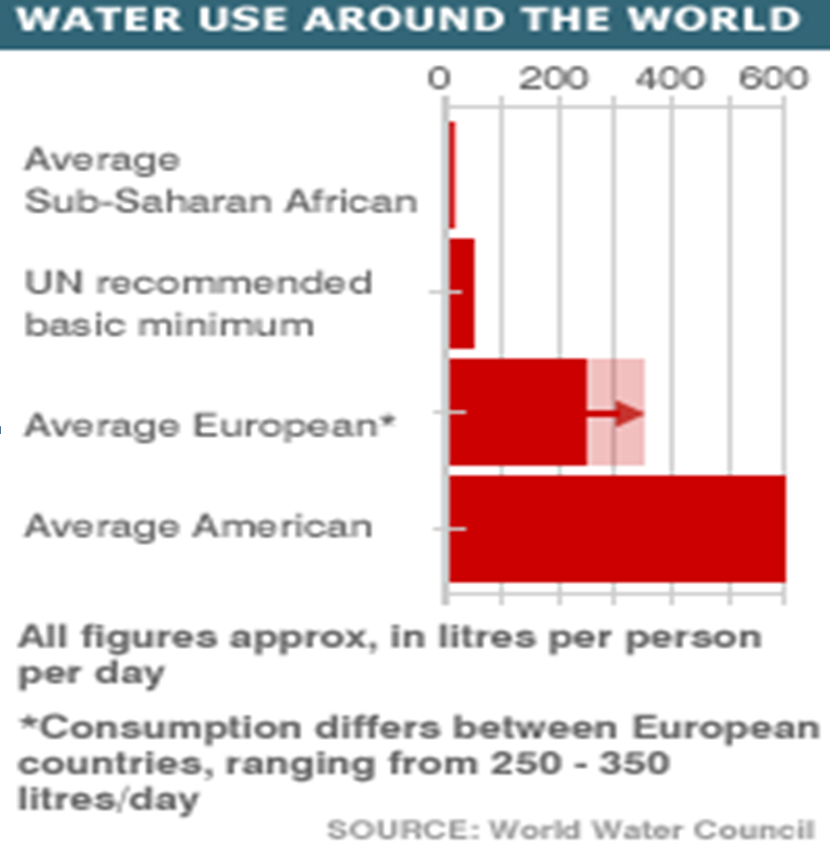
An estimated third of the world's population currently lives in water-stressed countries. This will likely increase to two-thirds within 25 years. Africa and Asia are already hard-hit by water stress. Increasing populations will create more pressure in the coming decades.

Part of reason for the imbalance in the water cycle is that as the Earth warms and the oceans warm, the Earth is essentially getting more tropical so that various kinds mosquitos that traditionally are confined to equatorial latitudes are now migrating to places they shouldn't be. This is because frost, the natural killer of such insects, is starting to occur less and less. For example, Dengue Fever previously could not spread out of the tropics but now there are even reported cases in Moscow, Russia!

As travel becomes more and more global, the number of tropical disease cases in the US is rapidly rising. Most of these cases are Malaria.
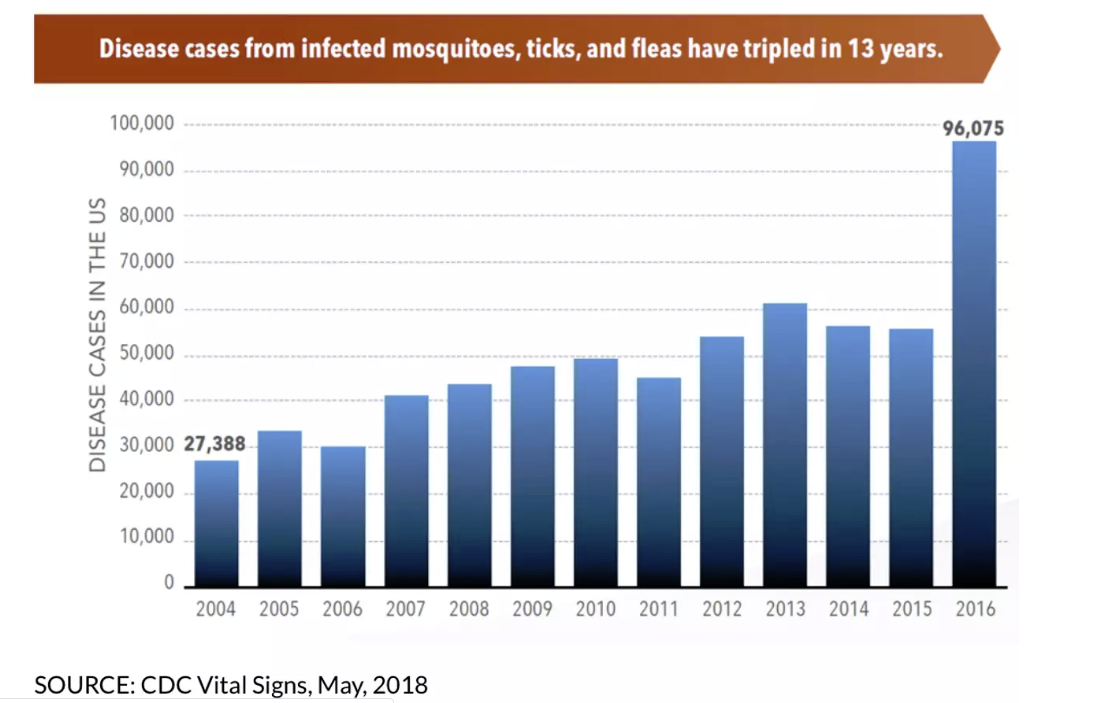
And a preview of the future has been provided by the very rapid spread of West Nile disease in the US. Basically over a period of 5-6 years, the entire US and much of Canada become at risk.

|